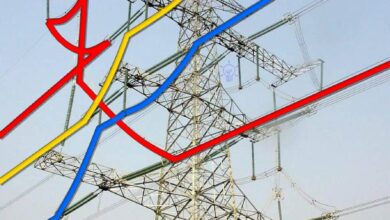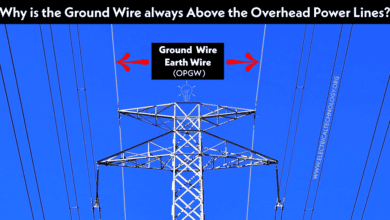Overhead Lines
-

Why Japan Uses Overhead Power Lines Instead of Underground?
Why Do Tokyo’s Streets Have Overhead Power Lines Instead of Underground Cables? The travelers may noticed that the streets of Tokyo, and much of Japan, filled with unsightly overhead power…
Read More » -
What Does Hanging Shoes from Overhead Power Lines Mean?
What are the Reasons Behind Shoes Strung Up on Power Lines? You may have seen colorful aerial marker balls on power lines, but what does it mean when shoes are…
Read More » -
The Mini LineFly Drone Robot Saves Birds from Colliding with Power Lines
The Mini LineFly Drone-based Robot Prevents Avian Collisions with Overhead Power Lines The modern landscape of power transmission has increasingly become a battlefield between human infrastructure and natural wildlife, particularly…
Read More » -
Why is the Position of Overhead Conductor Exchanged in a Transposition Tower?
Why are Overhead Conductor Positions Exchanged in a Transposition Tower? Electrical energy is transmitted in high-voltage three-phase lines without a neutral (3 conductors). Over long distances, these lines develop reactances,…
Read More » -
Why is Live Line-Washing or Cleaning Done on Energized Power Lines?
Importance of Live-Line Washing, Live-Line Maintenance or Cleaning What is Live-Line Washing? Live-line washing, also known as live-line maintenance or live-line working, is a technique used in the maintenance of…
Read More » -
How Does Temperature Impact Sag in Overhead Lines?
Effects of Temperature on Sag in an Overhead Line The sag in an overhead line, which refers to the vertical distance between a conductor and the straight line between its…
Read More » -
Why is Power Transmitted at High Voltage Instead of High Current?
Why is High Voltage Used for Power Transmission and Not Lower Voltage? Transmitting electrical power at high voltage and low current is a more efficient and economical approach for long-distance…
Read More » -
What is the Power Angle in a Power Transmission Line?
What Is the Power Angle in Transmission Lines, and How Do You Calculate It? The power angle (denoted by δ) is the phase angle difference between two voltage levels in…
Read More » -
What is Sag in Overhead Power Transmission Lines?
Calculation of Sag in Overhead Transmission Lines What is Sag? Sag in overhead power transmission line refers to the natural, downward curvature or dip that occurs in the power lines…
Read More » -
Why is the Ground Wire Always Positioned Above the Overhead Power Lines?
Why is the Ground Wire Above the Phase Lines in the Overhead Transmission Line? The ground wire (also known as earth wire or OPGW) above the phase lines in overhead…
Read More »








